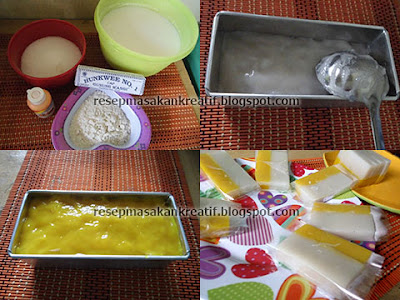Seekor semut yang pikirannya tersusun dalam rencana teratur, sedang mencari-cari madu ketika seekor capung hinggap menghisap madu dari bunga itu. Capung itu melesat pergi untuk kemudian datang kembali.
Kali ini Si Semut berkata,
“Kau ini hidup tanpa usaha, dan kau tak punya rencana. Karena kau tak punya tujuan nyata ataupun kira-kira, apa pula ciri utama hidupmu dan kapan pula berakhir?”
Kata Si Capung,
“Aku bahagia, dan aku mencari kesenangan, ini jelas ada dan nyata. Tujuanku adalah tanpa tujuan. Kau boleh merencanakan sekehendakmu; kau tak bisa meyakinkanku bahwa ada yang lebih berharga daripada yang kulakukan ini. Kaulaksanakan saja rencanamu, dan aku rencanaku.”
Semut berpikir,
“Yang tampak padaku ternyata tak tampak olehnya. Ia tahu apa yang terjadi pada semut. Aku tahu apa yang terjadi pada capung. Ia laksanakan rencananya, aku laksanakan rencanaku.”
Dan semutpun berlalu, sebab ia telah memberikan teguran sebaik-baiknya dalam masalah itu.
Beberapa waktu sesudah itu, mereka pun bertemu lagi.
Si Semut menemukan kedai tukang daging, dan ia berdiri di bawah meja tumpuan daging dengan bijaksana, menunggu saja apa yang mungkin datang padanya.
Si Capung, yang melihat daging merah dari atas, menukik dan hinggap diatasnya. Pada saat itu pula, parang tukang daging berayun dan membelah capung itu menjadi dua.
Separoh tubuhnya jatuh di lantai dekat kaki semut itu. Sambil menangkap bangkai itu dan mulai menyeretnya ke sarang, semut itu berkata kepada dirinya sendiri.
“Rencananya tamat sudah, dan rencanaku terus berjalan. Ia laksanakan rencananya -sudah berakhir, Aku laksanakan rencanaku -mulai berputar. Kebanggaan tampaknya penting, nyatanya hanya sementara. Hidup memakan, berakhir dengan dimakan. Ketika aku katakan hal ini, yang mungkin dipikirkannya adalah bahwa aku suka merusak kesenangan orang lain.”
Catatan
Kisah yang hampir serupa ditemukan juga dalam karya Attar, Kitab Ketuhanan, meskipun penerapannya agak berbeda. Versi ini dikisahkan oleh seorang darwis Bokhara dekat makam Al-Syah, yakni Bahaudin Naqsibandi, enam puluh tahun yang lalu. Sumbernya adalah buku catatan seorang Sufi yang disimpan dalam Masjid Agung di Jalalabad.
Kali ini Si Semut berkata,
“Kau ini hidup tanpa usaha, dan kau tak punya rencana. Karena kau tak punya tujuan nyata ataupun kira-kira, apa pula ciri utama hidupmu dan kapan pula berakhir?”
Kata Si Capung,
“Aku bahagia, dan aku mencari kesenangan, ini jelas ada dan nyata. Tujuanku adalah tanpa tujuan. Kau boleh merencanakan sekehendakmu; kau tak bisa meyakinkanku bahwa ada yang lebih berharga daripada yang kulakukan ini. Kaulaksanakan saja rencanamu, dan aku rencanaku.”
Semut berpikir,
“Yang tampak padaku ternyata tak tampak olehnya. Ia tahu apa yang terjadi pada semut. Aku tahu apa yang terjadi pada capung. Ia laksanakan rencananya, aku laksanakan rencanaku.”
Dan semutpun berlalu, sebab ia telah memberikan teguran sebaik-baiknya dalam masalah itu.
Beberapa waktu sesudah itu, mereka pun bertemu lagi.
Si Semut menemukan kedai tukang daging, dan ia berdiri di bawah meja tumpuan daging dengan bijaksana, menunggu saja apa yang mungkin datang padanya.
Si Capung, yang melihat daging merah dari atas, menukik dan hinggap diatasnya. Pada saat itu pula, parang tukang daging berayun dan membelah capung itu menjadi dua.
Separoh tubuhnya jatuh di lantai dekat kaki semut itu. Sambil menangkap bangkai itu dan mulai menyeretnya ke sarang, semut itu berkata kepada dirinya sendiri.
“Rencananya tamat sudah, dan rencanaku terus berjalan. Ia laksanakan rencananya -sudah berakhir, Aku laksanakan rencanaku -mulai berputar. Kebanggaan tampaknya penting, nyatanya hanya sementara. Hidup memakan, berakhir dengan dimakan. Ketika aku katakan hal ini, yang mungkin dipikirkannya adalah bahwa aku suka merusak kesenangan orang lain.”
Catatan
Kisah yang hampir serupa ditemukan juga dalam karya Attar, Kitab Ketuhanan, meskipun penerapannya agak berbeda. Versi ini dikisahkan oleh seorang darwis Bokhara dekat makam Al-Syah, yakni Bahaudin Naqsibandi, enam puluh tahun yang lalu. Sumbernya adalah buku catatan seorang Sufi yang disimpan dalam Masjid Agung di Jalalabad.





















 src="https://blogger.googleusercontent.com/img/b/R29vZ2xl/AVvXsEh4zgoKkY5esDyGDfXmhp5tz0W8H2jEgsRJx2wm9317hpr6CTdO8i4DPQj5mF-OAprw6GVcNt84Pt9Yp5U6XEz5h_pAP7azclFEO7kSUzDjr31IvLdzT01usqHnjVk1bBWsqpHQX6G4AIU/s1600/Photo0783.jpg" />
src="https://blogger.googleusercontent.com/img/b/R29vZ2xl/AVvXsEh4zgoKkY5esDyGDfXmhp5tz0W8H2jEgsRJx2wm9317hpr6CTdO8i4DPQj5mF-OAprw6GVcNt84Pt9Yp5U6XEz5h_pAP7azclFEO7kSUzDjr31IvLdzT01usqHnjVk1bBWsqpHQX6G4AIU/s1600/Photo0783.jpg" />












